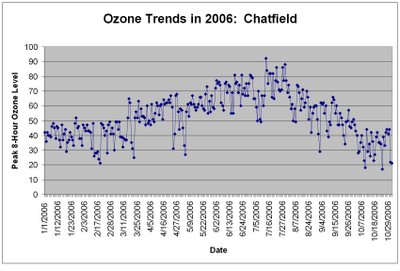Weld County Claims Clean Air Will Hurt Economy
Oil and gas industry apologist Weld County is at it again. This time, the Weld County Assessor is claiming that clean air rules that would help reduce smog in the Denver metro area--including in Weld County-- would actually "hurt" the County. Chris Woodruff, the Assessor, asserts that clean air could lead to lower tax revenues from oil and gas development, which in turn, he claims, would "hurt" Weld County.
Give me a break. Weld County government officials aren't just seriously misguided, they're liars. Chris Woodruff's claim that clean air rules will hurt Weld County is simply untrue. Why? Two reasons:
First, current regulations to reduce emissions of smog forming pollution from oil and gas development were, in fact, the most stringent rules adopted to reduce smog in the Denver area back when they were adopted in 2004. Guess what? Weld County is still raking it in; it has not experienced anything close to economic crisis and it has not had to ask voters to raise the mill levy.
Second, Chris Woodruff seems to be ignorant of the fact that ozone levels in Greeley, the seat of Weld County, exceeded federal health standards five days last summer. That's five days last summer that air quality was so poor that the Colorado Department of Health asked children with asthma to stay inside and play. That's five days last summer that seniors in Greeley faced a 20% or higher chance of going to the emergency room. I may be crazy, but I really don't think this helps for Weld County's economy a single bit.
The sad fact of the matter is that Weld County government officials care more about catering to the oil and gas industry than they do about the health of families.
Weld County will not lose tax revenue as a result of clean air. No, what Weld County stands to lose is far more valuable--the health of its children, its image, and its clean air. It's a shame the Weld County assessor doesn't care about the true costs of air pollution.





